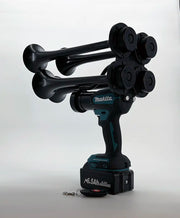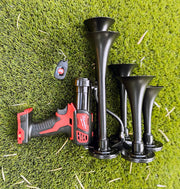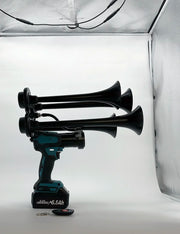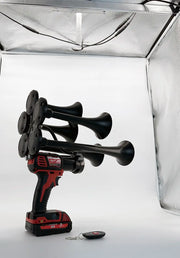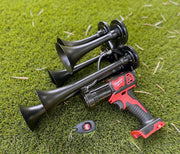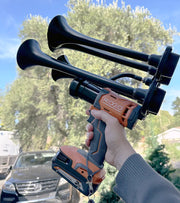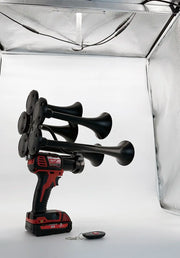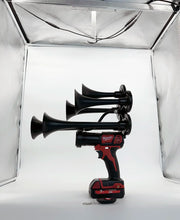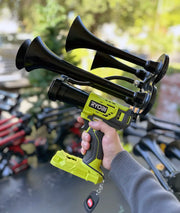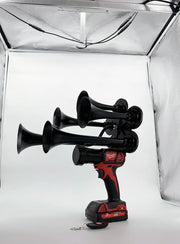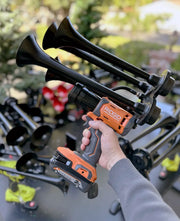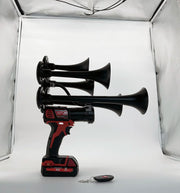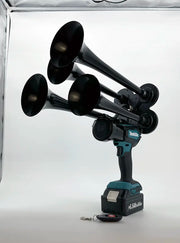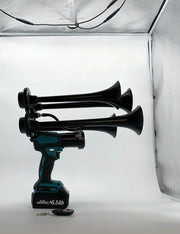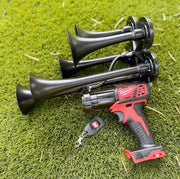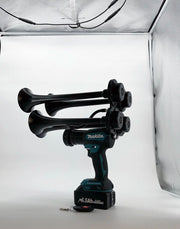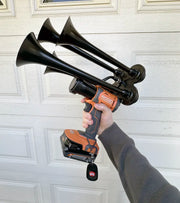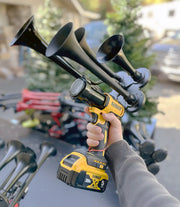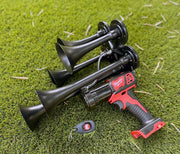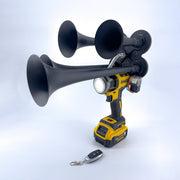Did you know that the sound produced by a certain type of traditional horn can reach up to 120 decibels, which is equivalent to the noise level of a chainsaw or a thunderclap? This loud and distinctive noise has become synonymous with sports events, particularly in South Africa where it gained widespread popularity during the 2010 FIFA World Cup.
Originally used by South African fans to show their support for their teams, the use of these horns quickly spread to other sporting events around the world. Despite their cultural significance and the energetic atmosphere they create, concerns have been raised about the potential harm they can cause to both fans' hearing and players' concentration.
Studies have shown that prolonged exposure to noise levels above 85 decibels can cause hearing loss. With vuvuzelas capable of reaching up to 120 decibels, it is important for fans to take precautions to protect their hearing. This can include wearing earplugs or maintaining a safe distance from the source of the noise to reduce the risk of damage.
As debates continue about the impact of vuvuzelas on sports events, it is essential for fans to be mindful of the potential risks associated with these loud horns. While they may add excitement and energy to the game, it is important to prioritize safety and take steps to protect one's hearing when in the presence of such high decibel levels.
What is the significance of vuvuzela decibels in sports events?
The level of noise produced by vuvuzelas, a popular instrument in sports events, has been a topic of debate among fans, players, and event organizers. The decibel levels of vuvuzelas can reach up to 127 dB, making them one of the loudest instruments in the world. This can add excitement and energy to the atmosphere of a game, but it can also potentially cause hearing damage to both players and spectators. In the next section, we will delve deeper into the impact of vuvuzela decibels on sports events and explore potential solutions to mitigate the risks associated with their use.
When discussing the noise levels produced by the popular plastic horn instrument used at sporting events, it is important to consider the decibel levels it can reach. Vuvuzelas are known for their loud and constant buzzing sound that can easily be heard throughout an entire stadium.
How loud are vuvuzelas?
Studies have shown that vuvuzelas can produce noise levels ranging from 100 to 130 decibels. To put this into perspective, a normal conversation typically registers at around 60 decibels, while a rock concert can reach up to 120 decibels. This means that vuvuzelas can be as loud as standing next to a chainsaw or a thunderclap.
Health risks associated with vuvuzela noise
Exposure to noise levels above 85 decibels can lead to hearing damage and loss over time. Prolonged exposure to vuvuzela noise during sporting events can put spectators at risk for hearing problems, especially if they are sitting close to someone playing the instrument.
Regulations on vuvuzelas
Due to concerns about the noise levels produced by vuvuzelas, some sporting events and stadiums have implemented restrictions on their use. This includes banning them altogether or limiting when they can be played during games to reduce the risk of hearing damage to spectators and players.
Statistics on vuvuzela noise levels
- Noise levels produced by vuvuzelas: 100-130 decibels
- Equivalent noise levels: Chainsaw or thunderclap
- Consequences of prolonged exposure: Hearing damage and loss
- Regulations on vuvuzelas: Banned or limited in some sporting events
https://youtube.com/watch?v=4S7C-iMWs44
What are the noise levels of the popular African horn?
The noise levels produced by the popular African horn can vary but generally range from 110 to 120 decibels. This loud noise level is similar to that of a chainsaw or a thunderclap. Vuvuzelas are known for being incredibly loud and can cause discomfort to those in close proximity.
1. Noise levels of the vuvuzela can range from 110 to 120 decibels.
2. This noise level is similar to that of a chainsaw.
3. Discomfort can be caused to those in close proximity to the vuvuzela.
Is it safe to be exposed to the noise produced by the instrument for a long duration?
Exposure to the noise produced by the vuvuzela for a long duration is not safe and can lead to hearing damage. Prolonged exposure to sounds above 85 decibels can cause hearing loss and irreversible damage to the ears.
1. Prolonged exposure to the vuvuzela can lead to hearing damage.
2. Sounds above 85 decibels can cause hearing loss.
3. Irreversible damage to the ears can occur from prolonged exposure to loud noise.
Can wearing ear protection help reduce the risk of hearing damage from the instrument?
Wearing ear protection can help reduce the risk of hearing damage from the instrument. Earplugs or earmuffs can help lower the intensity of the sound reaching the ears, therefore reducing the risk of hearing loss.
1. Ear protection such as earplugs or earmuffs can help reduce the risk of hearing damage.
2. Wearing ear protection helps to lower the intensity of the sound reaching the ears.
3. The risk of hearing loss can be reduced by using ear protection while exposed to loud noise.
How can one minimize the impact of the vuvuzela noise on their ears?
To minimize the impact of the vuvuzela noise on their ears, individuals can maintain a safe distance from the source of the sound. Additionally, taking breaks from exposure to the loud noise and wearing ear protection can help reduce the risk of hearing damage.
1. Maintaining a safe distance from the source of the vuvuzela noise can minimize impact on the ears.
2. Taking breaks from exposure to loud noise is recommended to reduce the risk of hearing damage.
3. Wearing ear protection can help minimize the impact of the vuvuzela noise on the ears.
Are there any regulations in place regarding the use of the instrument in public spaces?
Regulations regarding the use of vuvuzelas vary by country and even by specific event. Some venues or events may have restrictions on the use of the instrument due to the loud noise it produces. It is important for individuals to be aware of any regulations in place and to respect them to ensure a safe and enjoyable environment for all.
1. Regulations regarding the use of vuvuzelas vary by country and event.
2. Some venues or events may have restrictions on the use of the instrument due to its loud noise.
3. It is important to be aware of and respect any regulations in place regarding the use of vuvuzelas.
Conclusion
In conclusion, the vuvuzela can reach up to 127 decibels, making it one of the loudest instruments in the world. Its unique sound has become synonymous with football matches, but it also poses potential risks to hearing health. It is important for spectators and players to take precautions when exposed to vuvuzelas for an extended period of time. Overall, the vuvuzela's high decibel levels highlight the importance of protecting one's hearing in noisy environments.








